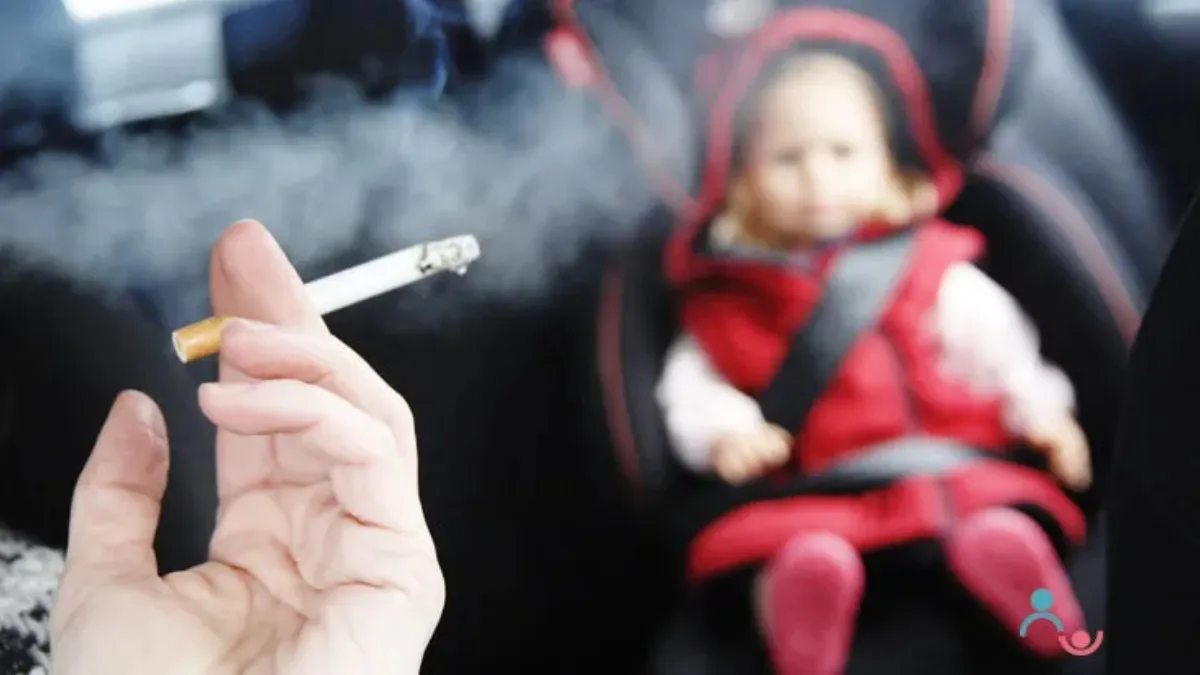As the world marks another World Asthma Day on May 7th, 2024, it’s imperative to shed light on a significant risk factor for asthma in toddlers: passive smoking. While asthma is a chronic condition affecting people of all ages, its impact on toddlers can be particularly distressing due to their vulnerability and the potential long-term consequences. Passive smoking, also known as secondhand smoke exposure, poses a grave threat to the respiratory health of young children, often leading to the development or exacerbation of asthma symptoms. Understanding the link between passive smoking and asthma in toddlers is crucial for implementing effective prevention strategies.
According to a study published in the National Library of Medicine, childhood exposure to smoke emerges as a significant risk factor for the development of asthma. Environmental exposure to smoke is identified as a crucial contributor to the onset and progression of asthma. Direct associations exist between passive smoking and asthma, primarily attributed to respiratory irritation and diminished pulmonary function. These factors contribute to heightened asthma severity and prevalence. Children who either actively smoke or report exposure to secondhand smoke, both at home and in school settings, face elevated risks of experiencing active asthma symptoms, exhibiting poorer performance on lung function assessments, and displaying a higher likelihood of developing chronic obstructive pulmonary disease in adulthood.
Risk factors:
As per Dr Richa Mittal, a Pulmonary Medicine Consultant at Sir H.N. Reliance Foundation Hospital in Mumbai, “asthma often has a genetic component, with children having a family history at higher risk. Exposure to environmental triggers like tobacco smoke and air pollution can exacerbate the condition. Identifying and minimising exposure to these factors is crucial for prevention.”
Prevention tips:
Utilising air purifiers: Air purifiers can help reduce allergen exposure, especially in polluted areas or for children at high asthma risk. It's advisable to use them, particularly in your child’s bedroom.
Maintaining a clean home environment: Keep indoor air clean by minimising exposure to dust mites, pet dander, smoke, and moulds. Regularly wash bedding, vacuum carpets, and ensure proper ventilation to prevent dust accumulation and mould growth.
Avoiding smoking: Second-hand smoke is a known asthma trigger. Avoid smoking or vaping around toddlers, both indoors and outdoors, to protect their delicate lungs.
Promoting healthy body weight: Encourage regular exercise and a balanced diet to strengthen the immune system and respiratory function in toddlers. Obesity is linked to a higher asthma risk, so aim for a healthy weight through physical activity and nutritious foods.
Administering flu shots: Ensure toddlers receive recommended vaccinations, including the flu shot, to reduce the risk of respiratory infections. Emphasise proper hand hygiene to prevent the spread of germs.
Seeking early intervention: Be vigilant for signs of respiratory distress in toddlers and promptly consult a doctor if asthma-like symptoms arise. Identify and address potential allergens in the environment for personalised management strategies.
Minimising medication use: Minimise unnecessary drug use in children, as certain medications may increase the risk of asthma later in life.
By maintaining a clean environment, promoting active lifestyles, and managing potential triggers, parents and caregivers can reduce asthma risk and safeguard their children’s respiratory health. Early intervention and monitoring are crucial for effective asthma management.
ALSO READ: World Asthma Day 2024: 5 essential Natural Ways to Ease Asthma Symptoms

